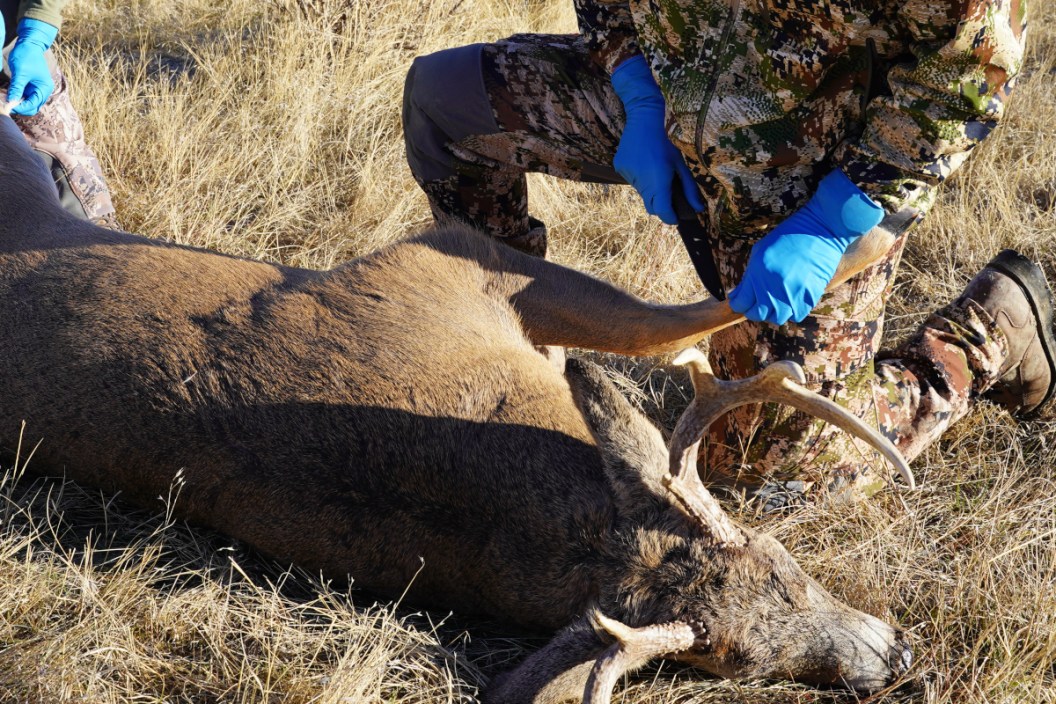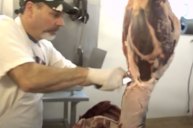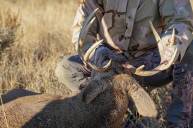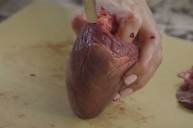Nothing is quite as rewarding as butchering your own meat from your deer harvest. The very sense of satisfaction hunters yearn for comes from obtaining the meat yourself. So, naturally, finishing the job offers just as sweet of a reward.
Butchering and processing seems like a daunting task, but it really isn't as difficult as you might think. You already did the hardest part in field dressing your harvest, so butchering it is a downhill battle. And, you can save a lot of money that you'd instead be giving to a professional butcher if you learn how to do it at home.
Before you totally discredit the idea, hear us out on why you should try butchering your own venison this year.
How long does it take to butcher a deer?
This is probably the biggest reason most people get back from deer hunting and haul their harvest straight to the butcher shop. However, if you have time to get out there and hunt for wild game animals, chances are you also have time to learn how to break down and process them. Stop making excuses!
Cutting up your own deer is going to be lengthy process at first. No one can skin a deer perfectly the first time, and no one is going to butcher or process their meat perfectly, either. Embrace the opportunity to learn in a hands-on approach. Learn the different muscle groups and figure out where each cut comes from. The first time you find the tenderloin, you'll never look at a deer the same!
It may take you a while to figure out how to remove all those little pieces of meat from the rib cage, and only practice will allow you to salvage the most possible neck meat. Cleaning up a deer carcass isn't exactly something you can learn overnight. So for the first few times, expect to spend the better part of a day, and before you know it, you won't have to think about any of the steps, it'll be second nature. Some hunters can butcher a whole deer in an hour or less. Do you think they got that good overnight? Nope, they had to practice, practice, practice!
Make it easier on yourself with good equipment
You don't need an expensive electric bone saw, a meat grinder, or many of the other things common in a professional butcher shop. They might make the job easier, but this doesn't have to be an expensive endeavor.
You can get by with a good skinning knife, a fillet knife, some cutting boards and a clean space to do the dirty work. A cheap plastic table to work on might set you back $30-$50 at the most, but you can keep using it on your whitetail harvests for years to come. Get one with an adjustable height, and you can raise it to work on while standing and save your back from bending over.
And, most importantly, a sharp knife is everything. Obviously, the sharper your blade, the easier this is going to be. Keep a sharpener on hand if things start getting difficult, as it's not the deer meat getting tougher, but rather your blade getting duller. Don't make things harder on yourself by using substandard tools!
Watch plenty of "how-to" videos beforehand
Thanks to this wonderful thing called the Internet, it's now easier than ever before to learn how to butcher a deer at home. Our own site or obvious places like YouTube are loaded with videos that will walk you through everything you need to do with step-by-step tutorials that take you from removing the antlers to canning or vacuum-sealing your meat.
They'll likely provide every detail you need for deboning, removing the front shoulders and brisket, and how to butcher a deer hind quarter. The web presents a vast vault of knowledge that will cost you nothing.
Sure, the men and women in these videos usually make things look a lot easier than they are, but watching them will teach you more than a book or magazine article will. The best videos, like this popular one above from the "Bearded Butchers," goes over what each of the cuts of meat is best for and how to slice each for maximum yield.
Don't be afraid to make mistakes
Too many hunters obsess or worry about what others think. I've seen plenty of butchering or field dressing videos on the internet with people screeching in the comments about how the person in the video hung the deer on the gambrel wrong, used the wrong fillet knife, or separated the pelvic bone wrong.
Look, if it yields big game meat on the table, does it really matter how it's done? It takes time to learn how to cut with the bones and follow the natural seams in the muscles with your knife. Odds are, you're going to mess something up along the way. If you make a mistake, the meat can still be salvaged most times and thrown into a pile for stew meat, jerky, or in the grinder for ground meat. The only thing you should be concerned about is utilizing every portion of the animal that you can.
You're not going to be perfect the first time you try it, but this is something every hunter should try at least once in their hunting careers.
For more outdoor content from Travis Smola, be sure to follow him on Twitter and check out his Geocaching and Outdoors with Travis YouTube channels.




